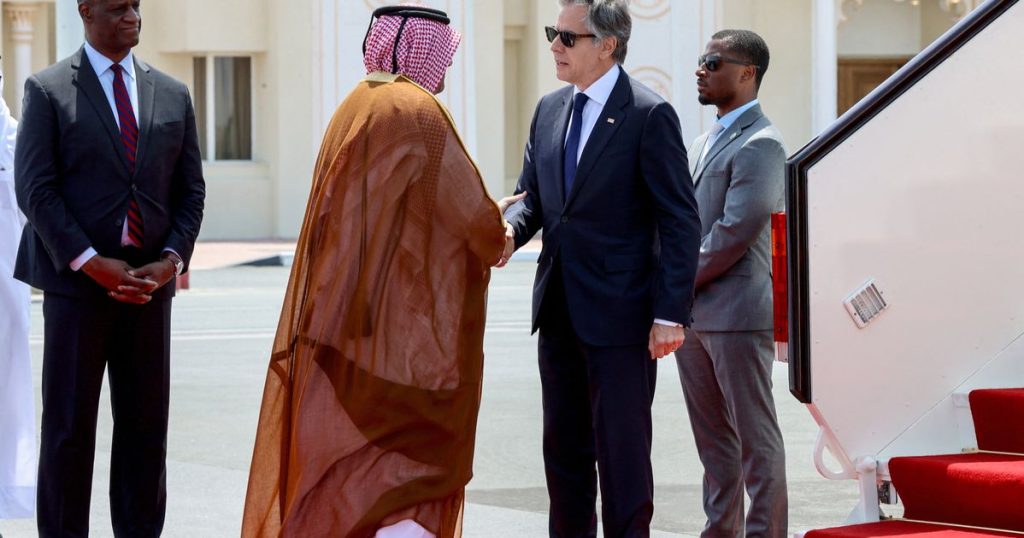Hezbollah retaliated against Israel by firing a barrage of rockets into northern Israel following the killing of senior commander Taleb Sami Abdullah, escalating tensions in the region. Hezbollah, backed by Iran, has been engaged in daily clashes with Israel during the ongoing conflict with Hamas. The attack from Hezbollah came as U.S. Secretary of State Antony Blinken was in the region seeking a cease-fire agreement that has not been fully accepted by either Israel or Hamas. The retaliatory attack further raised concerns of a larger regional conflict.
The retaliation from Hezbollah involved firing missiles and rockets at Israeli military bases to avenge the killing of Abdullah, who was a key commander within Hezbollah. The Israeli strike that resulted in Abdullah’s death also killed three other officials and destroyed a house near the border with Lebanon. Abdelah had a long history with Hezbollah and was involved in attacks against Israeli forces during their occupation of southern Lebanon. The conflict has resulted in hundreds of casualties on both sides, including both combatants and civilians.
The U.S. has been pushing for a cease-fire proposal aimed at ending the conflict in Gaza, which has been supported by the U.N. Security Council. The plan involves a phased approach that includes a temporary cease-fire, release of hostages, and withdrawal of Israeli forces from Gaza. Hamas has expressed support for the plan but has requested amendments, including guarantees of a permanent cease-fire and a complete Israeli withdrawal. The proposal has raised hopes of ending the conflict that has resulted in a significant loss of life and displacement of civilians in Gaza.
Israel launched its campaign against Hamas in response to a deadly attack by militants that resulted in the deaths of many civilians and the taking of hostages. The conflict has led to significant destruction and humanitarian crisis in Gaza, with ongoing fighting hindering efforts to provide aid to the population. The proposal put forward by the U.S. aims to address these issues by providing humanitarian assistance, facilitating the release of hostages, and working towards a long-term solution for the region. However, there are challenges to the acceptance of the proposal from both sides.
While Hamas has indicated some level of acceptance of the proposal, Israel, specifically Prime Minister Benjamin Netanyahu, has sent conflicting signals. Netanyahu’s coalition allies have rejected the plan and threatened to bring down the government if the conflict ends without the complete dismantling of Hamas. However, there is increasing pressure on Netanyahu to accept a deal that would bring the hostages back home. The situation remains tense, with ongoing negotiations and efforts to reach a lasting cease-fire agreement to end the conflict in Gaza and prevent further escalation in the region.
Overall, the situation in the region remains complex and volatile, with multiple parties involved in the conflict and efforts to reach a cease-fire agreement. The role of external actors, such as the U.S., in mediating the conflict and pushing for a diplomatic solution is crucial in preventing further escalation and addressing the humanitarian crisis in Gaza. The fate of the proposed cease-fire plan, as well as the responses from Israel, Hamas, and other groups, will determine the path forward in the conflict and whether a lasting peace can be achieved in the region.








